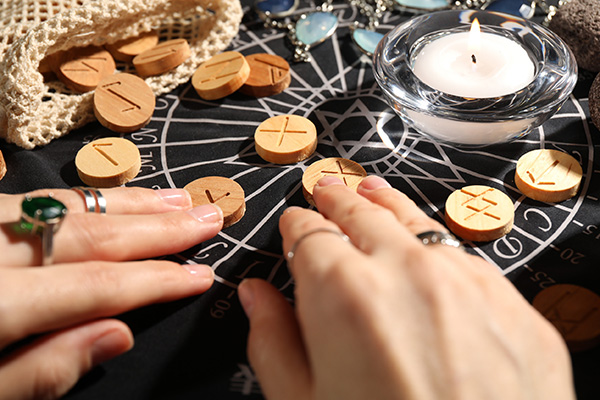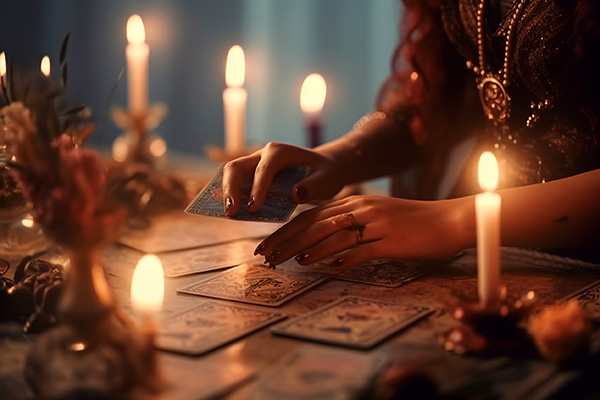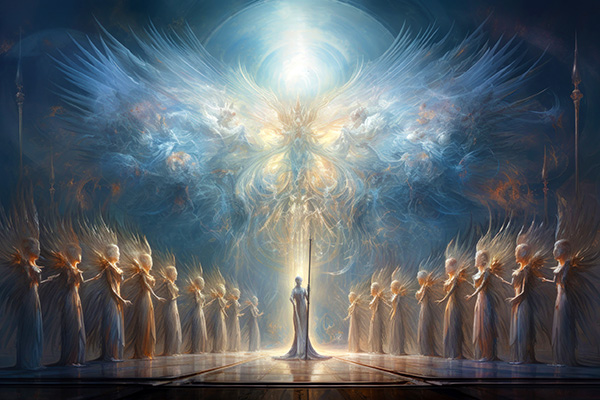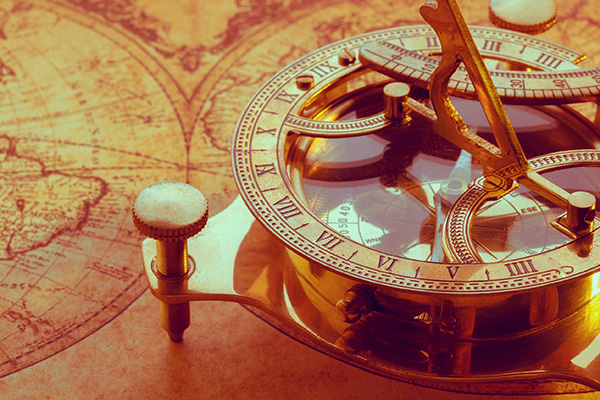Uncover the Purpose and Importance of the Holy Call for Spring Revitalization
 As the first tender sprouts awaken and the air is filled with the refreshing aroma of nature’s revival, Spring has finally come. This cherished time brings forth powerful energies of change, urging us toward transformation, renewal, and fresh starts.
As the first tender sprouts awaken and the air is filled with the refreshing aroma of nature’s revival, Spring has finally come. This cherished time brings forth powerful energies of change, urging us toward transformation, renewal, and fresh starts.
Though change can be invigorating, it often arrives with feelings of uncertainty, excitement, and occasionally fear. We find ourselves at a juncture, balancing the comfort of the familiar with the expansive possibilities that await.
During the winter, we naturally retreated within ourselves — physically seeking warmth and spiritually turning our attention inward to reflect, heal, and dream. Unbeknownst to us, we ventured into the sacred depths of our wisdom, nurturing the seeds of our soul’s most profound desires.
Now, as the earth awakens and the air warms, the essence of our being too stirs, ready to birth something new and extraordinary.
Even if you don’t fully comprehend what is manifesting within, your soul is always aware. It has been preparing you for this very moment, nurturing the visions and intentions that you have quietly cultivated during the stillness of winter.
New beginnings can sometimes appear as external shifts — a career change, moving to a new place, or forming new relationships. Other times, they reveal themselves as internal transformations — an awakening of self-love, a renewed sense of purpose, or a deeper spiritual connection.
Regardless of whether the change is external or internal, one universal truth prevails: transformation often accompanies feelings of anxiety. It is completely normal to experience a blend of emotions while stepping into the unknown.
The lovely spring arrived; and when Nature reclaims her beauty, the human spirit is likely to awaken as well ~ Harriet Ann Jacobs
However, it is wise to remember that you are not alone in this journey. You are a divine entity — spirit incarnate — flowing in synchrony with the greater intelligence that orchestrates all existence.
The Sacred Traditions Of Spring
For centuries, humanity has sought to grasp the mysteries of spirit, the rhythms of life, and the nature of divine intelligence. From the Egyptians and Mesopotamians to contemporary seekers, we have always felt drawn to the cycles of endings and beginnings, acknowledging them as essential components of the soul’s journey.
Spring has long been acknowledged in spiritual and esoteric traditions as a period of renewal, rebirth, and transformation. As the grip of winter loosens, life resurfaces anew, symbolizing the cycles of death and rebirth that are pivotal to numerous belief systems.
In ancient pagan customs, spring denoted a sacred phase of fertility and growth. The Spring Equinox, known as Ostara in Wiccan practices, celebrates balance and the return of light, as day and night attain equality. This moment is linked to Ostara (or Eostre), the fertility goddess, whose symbols – eggs and rabbits – embody new life and bounty, intertwining the cycles of nature with human desires for growth and prosperity.
In many Eastern philosophies, spring signifies rejuvenation. In Traditional Chinese Medicine, this season corresponds to the wood element and the liver organ, connected to energy flow, vitality, and vision. The spring energy is recognized as yang, a time for cleansing, creation, and embracing transformation.
For Christians, spring’s significance is deeply intertwined with Easter, relating to the resurrection of Jesus Christ. This sacred day reflects the themes of redemption and victory over death, paralleling nature’s revival.
Indigenous cultures also respect the spiritual aspects of spring through planting rituals and gratitude for the earth’s abundance. These practices highlight humanity’s interconnectedness with the cycles of nature.
The spiritual teachings of spring convey that endings should not be feared but viewed as necessary precursors to new life. Flowers do not grieve the passing of winter; instead, they bloom when the moment is right. Likewise, we must learn to release what no longer serves us with appreciation and embrace the unknown with an open heart.
This season invites us to step into our fullest expression — honoring past growth while welcoming the possibilities of now. You are more capable, wise, and connected than you realize. Trust in the process, trust yourself, and trust in the divine intelligence that guides all.
For every individual who has ever existed, there comes a spring they will never witness. Rejoice then in the springs that you possess ~ Pam Brown
The Greening Power Of Spring
Spring and the color green are deeply intertwined, symbolizing renewal, growth, and vitality. As nature stirs from winter’s slumber, green emerges as the prevailing color, signifying rebirth and fresh starts.
In spiritual and esoteric teachings, green is linked to healing, balance, and the heart chakra, embodying the season’s energy of rejuvenation and emotional restoration. This hue also resonates with anahata (the heart chakra), representing love, harmony, and the renewal of energy. Green is similarly associated with the Green Lion, an alchemical emblem of dissolution and transformation, reflecting how spring dissolves the barrenness of winter and heralds new potential.
The “greening power” of viriditas is a mystical notion introduced by Hildegard of Bingen, a 12th-century abbess, mystic, and polymath. It symbolizes the divine life force that flows through all living beings, representing vitality, growth, and renewal. Hildegard perceived viriditas as both a physical and spiritual energy, linking humanity to nature and the divine.
She characterized it as the lush, vibrant greenness of life, observable in nature’s zest and also present within the human spirit. For Hildegard, this “greening power” served as a metaphor for healing, wholeness, and the interconnectedness of all creation. It reminds us of the divine essence in the natural world and the potential for renewal and growth in every facet of life.
Just as spring awakens the earth from winter dormancy, viriditas signifies the rejuvenation of the soul and the divine vitality that animates all existence. Spring embodies rebirth and initiation, mirroring the soul’s transition from darkness (nigredo) into a phase of growth and spiritual flourishing.
In the alchemical odyssey of the soul, viriditas represents an early stage of enlightenment where divine energy begins to flow and awaken the seeker. It is not yet the ultimate stage of enlightenment (rubedo), but rather a fertile and transformative phase that nourishes both the spirit and the world with renewed life. Just as viriditas revitalizes the spirit, spring restores emotional and energetic equilibrium.
Viriditas is the connecting sap between the macrocosmic power of God and the microcosm of humanity, demonstrating the reign of God and kin-dom in our lives. It brings healing and renewal not only to plants but also to human beings ~ Nameeta Renu
Trusting Divine Intelligence
Divine intelligence is what maintains the planets in perfect alignment, the tides flowing with the moon, and your heart beating effortlessly. It is the force that has guided you since you were born and will continue to guide you through every transition. If it can handle the vast intricacy of the cosmos, it surely knows how to facilitate your navigation through change.
Your intuition — the sacred voice of your higher self — is always communicating, gently urging you to have faith in your unfolding path. Just as you intuitively knew what required nurturing during the winter months, you also knew which changes were essential for your soul’s growth.
What is occurring now is simply the merging of your subconscious wisdom with your conscious awareness, aligning you with the divine flow of existence.
Spring presents the ideal opportunity to release resistance and permit this natural rhythm to carry you gracefully forward. Rather than viewing change as something to dread, embrace it as a sacred invitation to blossom into the highest version of yourself.
Many find it challenging to trust their intuition or psychic insight, particularly if they are unaccustomed to paying attention to this inner voice. But akin to any muscle, your intuitive senses enhance with practice and patience.
Consider this analogy: when you commit to physical exercise, your body steadily becomes stronger and more resilient. The same applies to your psychic and spiritual awareness. The more you engage — whether through meditation, reflection, or simply quiet moments of inner listening — the more readily you will identify and trust your intuitive guidance.
I believe that regardless of how old or frail I may become, I will always cultivate a large garden in the spring. Who can resist the feelings of hope and joy that arise from engaging in nature’s rebirth? ~ Edward Giobb
Increasing Your Spiritual Awareness
Here are several methods to enhance your connection to your intuition and inner guidance this spring:
Spend time in nature: Spring signifies rebirth, and nature is overflowing with vibrant energy. Wandering among the trees, listening to the birds, or simply feeling the sunlight on your skin can help ground you and elevate your awareness to the gentle whispers of Spirit.
Set new intentions: As the environment around you flourishes, so can your dreams, wishes, and aspirations. Formulate new intentions for what you wish to create and manifest this season, trusting that the Universe will support your journey.
Practice meditation and silence: Dedicate time each day to quiet your mind. Even a few minutes of deep breathing and mindfulness can help you connect with your inner wisdom and gain clarity on your next steps.
Journal your insights: Documenting your thoughts, dreams, and intuitive nudges can reveal patterns and messages from your higher self. Pay attention to recurring symbols or sensations — they may carry crucial guidance.
Connect with your tribe: Spring is a perfect occasion to spend less time indoors. Get out and engage in group activities where you can be surrounded by like-minded individuals. Energy is infectious. Being in the presence of others who are embracing their spiritual and psychic natures can help you better attune to your own intuitive gifts.
A Blessing For Your Spring Renewal
May this spring grant you clarity, courage, and a renewed sense of purpose.
May you greet the winds of change with open arms and a receptive heart.
May you trust the divine intelligence within you to guide your path.
May you discover joy in the unfolding of new beginnings and tranquility in the rhythm of the eternal cycles of life.
As the world around you flourishes, may you bloom into the radiant being you were always destined to become.
|
Known as The Psychic’s Psychic, since 1998, Isadora has provided readings for countless individuals worldwide, including clients from the Obama administration, Fortune 500 CEOs, and prominent figures in Hollywood. Her exceptional (Gemini) accuracy is remarkable, with her capability to perceive individuals at the Soul Level and clearly respond to inquiries across a wide array of topics, from relationships to business choices, and past lives — anything needing precise answers and insightful clarity. She possesses the ability to uncover hidden patterns underlying your present circumstances, offering you insights to positively shape your future. If you’re interested in a reading with this compassionate, straightforward, laser-accurate, and committed Psychic, you can find Isadora at PsychicAccess.com. |
Spring is a time of renewal and rebirth, a season that heralds new life and fresh beginnings. It is a moment when nature stirs from its winter slumber, and the surroundings burst forth with vibrant colors and fragrances. In various cultures and spiritual practices, spring is regarded as a sacred invitation for renewal and transformation.
The sacred invitation for spring renewal bears profound significance for those who choose to embrace it. It presents a chance to let go of the old and create space for the new. Much like nature sheds its winter coat, we too can release the layers that no longer serve our journey and welcome a new start.
A crucial element of the sacred invitation for spring renewal revolves around the concept of letting go. Just as trees drop their old leaves, we are encouraged to relinquish any negative emotions, limiting beliefs, or stagnant energies that may be hindering our progress. This can be achieved through various practices, including meditation, journaling, or engaging in rituals that symbolize release.
Embracing change is another vital aspect of the sacred invitation for spring renewal. Spring signifies transition, reminding us that change is a natural part of existence. By welcoming change, we open ourselves up to new opportunities for growth. This can manifest as changes in our daily habits, exploring new experiences, or setting new objectives for ourselves.
Spring also represents a time for reconnecting with ourselves and others. As the days lengthen and the weather becomes more inviting, we are encouraged to spend more time outdoors, engaging with nature and absorbing its healing energy. This can include activities like gardening, hiking, or simply enjoying a stroll in the park. It’s also a period for reconnecting with loved ones, nurturing relationships, and fostering a sense of community.
The sacred invitation for spring renewal encompasses not only personal transformation but also the alignment of ourselves with the Earth’s natural rhythms. It highlights our interconnectedness with all living beings and the importance of living in harmony with nature. This could include adopting sustainable practices, supporting local farmers and businesses, or participating in environmental initiatives.
In many spiritual traditions, spring is celebrated with various rituals. For instance, the Spring Equinox, or Ostara, is honored in numerous cultures as a time of equilibrium and fertility. It is a moment to celebrate the return of the sun and the Earth’s awakening. Celebrations might involve lighting bonfires, decorating eggs, or performing ceremonies that signify rebirth and renewal.
In summary, the sacred invitation for spring renewal serves as a compelling reminder of life’s cyclical nature and the opportunities for both individual and collective transformation. It is a moment to let go of the old, welcome change, reconnect with ourselves and others, and align with the Earth’s natural rhythms. By accepting this invitation, we can tap into the energies of spring and embark on a journey of renewal and growth. Therefore, as the flowers bloom and the birds serenade, let us wholeheartedly embrace the sacred invitation for spring renewal and welcome the beauty and abundance this season has to offer. Continue reading
















